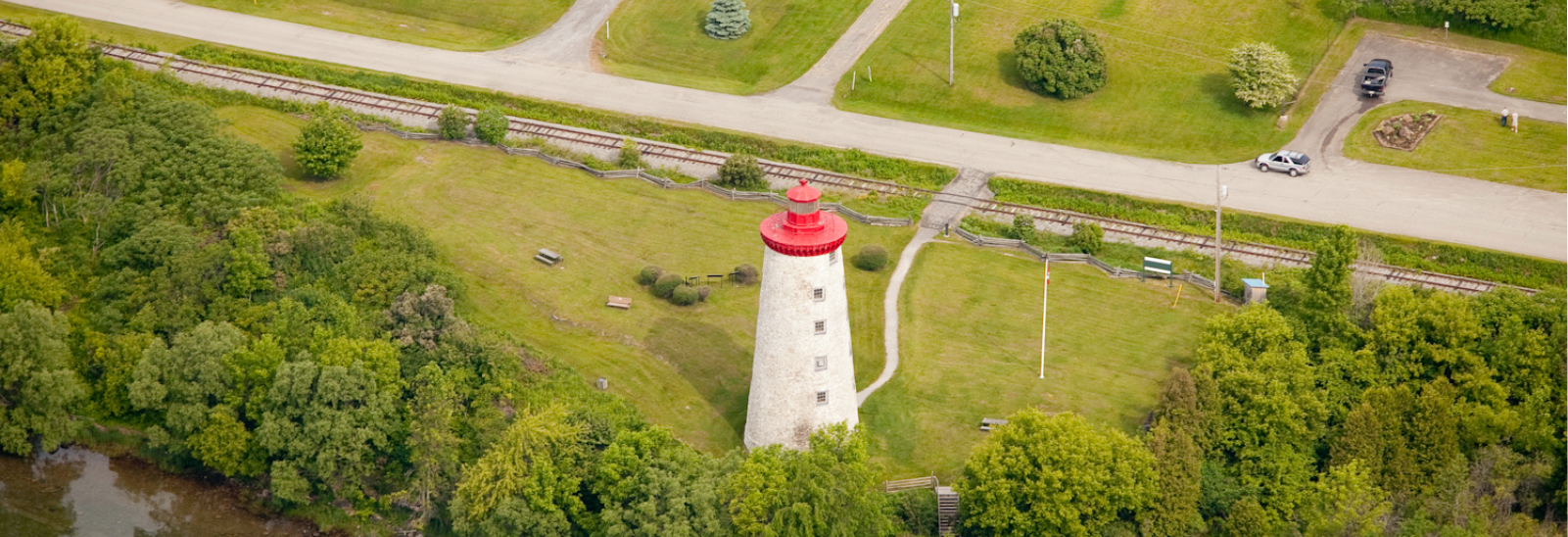Roads and Sidewalks
The Public Works department's staff consists of one director, one roads superintendent and seven full and part-time operators.
The department operates primarily from two locations: Pittston Depot at 4145 County Rd. 22, Pittston and Cardinal Depot at 4035 Dishaw St., Cardinal — responsible for maintenance of all Township roads, both rural and urban, including the Villages of Spencerville, Cardinal, Johnstown, New Wexford and Ventnor.
Our fleet of vehicles includes:
- Two single axle dump trucks
- Four tandem plow trucks
- Two graders
- Two rubber-tire loaders
- One rubber-tire excavator
- One backhoe
- Two sidewalk tractors
- One farm tractor with grass-mowing attachments
Municipal Consent/Road Cut permits
The Township's Entranceway Bylaw regulates road activity in the Township of Edwardsburgh Cardinal. Except for emergency work, no person shall undertake a road cut on a Township Road without first obtaining a Municipal Consent/Road Cut Permit from the Township to do so.
What is Municipal Consent?
A Municipal Consent (MC) is the municipality's authorization for a Utility Company to occupy a specific location within the Municipality's Right-Of-Way (ROW). MC's are only issued to utility companies who have the authority to construct, operate, and maintain their infrastructure within the ROW as established through legislation, a Municipal Access Agreement, or a Franchise Agreement.
All projects within the Municipal right-of-way are subject to on-site inspections by The Township of Edwardsburgh Cardinal, Manager of Public Works and must comply with Ontario Provincial Standards Specifications (OPSS 510)
When is Municipal Consent Required?
All proposed new utility installations or any work done by a Utility Company within the municipal ROW require MC from the Township Public Works Department. Chose one of the following options to submit your application:
Online Municipal Consent/Road Cut Permit Application
Printable pdf. Municipal Consent/Road Cut Permit Application
Stop Signs/Lowering Speed Limit - Are they warranted?
| What is the purpose of stop signs? |
| Stop signs are installed as a means of ensuring the safe flow of traffic by controlling vehicle right-of-way at intersections; they are not intended to be used as speed control devices. Recommendations to place all-way stop signs are based on visibility, surrounding land use, type of roadway, collision frequency, and volume of traffic. |
| Can't we just install an all-way stop sign? |
|
Studies have shown that when stop signs are installed but are not warranted, they are ineffective for traffic calming purposes. It has been found that:
|
|
When should all-way stop signs not be installed? |
|
| What is the purpose of having speed limits? |
|
Safety is always a factor. However, the setting of speed limits is for completely practical reasons. When setting speed limits, traffic engineers base standards on several fundamental concepts, which have been proven to be true over the years; including:
Research and experience have shown that effective speed limits are those the majority of motorists naturally drive, and that raising or lowering speed limits does not substantially influence that speed. |
| If the speed limit is lowered, people drive slower, right? |
| The answer is no, just as people don't automatically drive faster when the speed limit is raised. One reason for setting speed limits lower than speed considered safe and reasonable by the majority of motorists is based on the belief that lower speed limits reduce speeds and number of collisions. Unreasonably low limits significantly decreases driver compliance and give road users such as people not familiar with the roadway, as well as pedestrians a false sense of actual traffic speeds. |
| What if the majority is driving too fast? |
|
It's actually more dangerous when motorists are travelling at varying speeds. With speed limits set at the 85th percentile, the speed differential (range of travel speeds) is reduced so that more vehicles are travelling at near the same speed, with fewer vehicles travelling at extremely high or low speeds. Statistics show that roadways with speed limits set at the 85th percentile speed have fewer collisions than roads where the posted speed limit is below the majority naturally travels. |
|
What if people do not obey the posted speed limit? |
|
The local OPP cover a very large area and cannot be in all places at all times monitoring speeds and other areas for compliance. The OPP rely on realistic speed laws to control the unreasonable speeder whose driving behaviour is clearly out of line from the majority of the traffic flow. A reasonable speed limit offers an effective enforcement tool to the OPP by clearly separating the occasional violator from the reasonable majority. The solution is not to post a speed zone to an unjustifiably low speed and then expect law enforcement to control the violators by constant monitoring. The OPP cannot afford to sit in wait constantly for speeders in a multitude of locations. |














